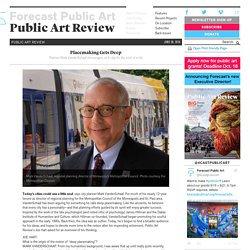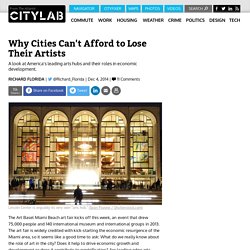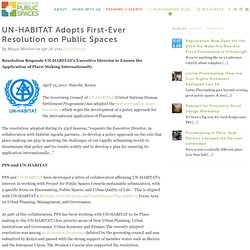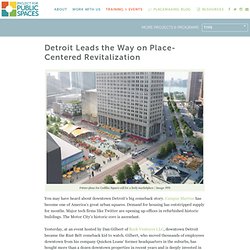

Design and Social Responsibility by William Mangold - The People, Place, and Space Reader. 2 × 4: Essay: Who's responsible? About EcoDistricts - District-Scale Urban Development Firm. Nelson Megapolitan America. Untitled. Untitled. Poeticutility bustersimpson1998. Download 1473810442218. USFS: Urban Tree Canopy Assessment. Urban Tree Canopy Assessment Today, many communities are looking to become more sustainable and livable.

Improving a city’s tree canopy (i.e. tree cover) can have numerous benefits, from reducing summer peak temperatures to improving social ties among neighbors. These factors can help a community attract businesses and residents. The aim of the urban tree canopy (UTC) assessment is to help decision makers understand their urban forest resources, particularly the amount of tree canopy that currently exists and the amount that could exist. The UTC assessment protocols have been applied to dozens of counties, cities, and towns in the United States and Canada.
UTC Prioritizations UTC assessments provide urban resource managers with vital information to begin the goal setting and planning processes. Where is it socially desirable to plant trees? UTC Markets Using LiDAR to Quantify the Urban Tree Canopy New York City acquired LiDAR in the spring of 2010. Research Highlights. Andrea Zittel by Stefano Basilico.
Andrea Zittel, Free Running Rhythms and Patterns: Version II, 2000, 1/4 inch walnut veneer panels, latex and oil-based vinyl lettering, black and white photographs: 27 panels each 79 × 31 5/8 × 2 inches.

All Images Courtesy Andrea Rosen Gallery. For over a decade, Andrea Zittel’s art has investigated the structures of life on every level, from the biological (selective breeding), to the social and domestic (furniture design and clothing), to the fantastic (self-designed escape vehicles). In her latest project, Zittel has moved away from the mundanity of daily life into the terrain of complete separation, in the form of a literal private island.
What is apparent in all of her work, however, is that rather than offering definitive answers, Zittel’s art continually poses questions not only to her viewers but, most importantly, to herself. Significantly, Zittel has set up her life so that she will live with the consequences. Stefano Basilico Your house is very clean! AZ Yeah. AZ Yeah. Ground-up City: Play as a Design Tool - Liane Lefaivre. Placemaking Gets Deep - Forecast Public Art. Mark VanderSchaaf, regional planning director of Minnesota's Metropolitan Council.

Photo courtesy the Metropolitan Council. Today’s cities could use a little soul, says city planner Mark VanderSchaaf. For much of his nearly 12-year tenure as director of regional planning for the Metropolitan Council of the Minneapolis and St. Paul area, VanderSchaaf has been arguing for something he calls deep placemaking. Like the ancients, he believes that every city has a personality—and that planning efforts guided by its spirit will enjoy greater success. Andrea Zittel. A-Z Uniform Project, Second Decade Close A-Z Uniform Series, 2004-2014 A-Z Uniform Series, 2004-2014 A-Z Uniform Series, 2004-2014 A-Z Uniform Series, 2004-2014 A-Z Uniform Series, 2004-2014 A-Z Uniform Series, 2004-2014 A-Z Uniform Series, 2004-2014 A-Z Uniforms are personal “uniforms” that are made and worn for an entire season.
To add: The Guerrilla Gardening Home Page. Friends of the High Line. Project Types - communitecture ARCHITECTURE.
Hand-in-Glove: A Social Response. Project Row Houses - African-American artists and community activists in Houston's Third Ward. Why Cities Can't Afford to Lose Their Artists. The Art Basel Miami Beach art fair kicks off this week, an event that drew 75,000 people and 140 international museum and international groups in 2013.

The art fair is widely credited with kick-starting the economic resurgence of the Miami area, so it seems like a good time to ask: What do we really know about the role of art in the city? Does it help to drive economic growth and development or does it contribute to gentrification? Are leading edge arts clusters found just in big cities, like New York and Los Angeles, or can they spread to smaller and medium sized ones as well?
A recent study published in the journal Urban Studies takes a close look at the connection between the arts and city building. The researchers use a series of statistical techniques, including correlations and regression models, to identify the types of places that are home to arts clusters and the key locational factors that are associated with them. Two important implications flow from the study’s key findings. Millennium Villages – Center for Sustainable Development. The Millennium Villages Project’s sites are areas in which community-level work is done to advance MDG related goals in health, nutrition, and education.

Accomplishments in these sectors will be documented over the life of the project. Areas of measurement will include malaria morbidity, access to water and sanitation, education attendance and performance, and availability of school meals. The findings will review lessons learned in empowering local communities to achieve the MDGs. CSD at the Earth Institute is home to the monitoring and evaluation and the systems design teams for the Millennium Villages. Places in the Making by MIT DUSP. How Deep Do Tree Roots Really Grow?
Our 2010 blog entry by James Urban, FASLA, on the topic of how deep tree roots grow is consistently one of our most popular.

Obviously there is a curiosity about this topic and a need for useful data about it. But the original post is a little technical and not as image-heavy as we’d like. So today we’re bringing you a new and improved version of the original post, with additional pictures and more simplified explanation of the factors that really influence how deep tree roots grow. How deep tree roots grow depends on three simple factors. UN-HABITAT Adopts First-Ever Resolution on Public Spaces. Resolution Requests UN-HABITAT’s Executive Director to Ensure the Application of Place-Making Internationally April 15, 2011- Nairobi, Kenya The Governing Council of UN-HABITAT (United Nations Human Settlement Programme) has adopted the first-ever public space resolution which urges the development of a policy approach for the international application of Placemaking.

The resolution, adopted during its 23rd Session, “requests the Executive Director, in collaboration with Habitat Agenda partners…to develop a policy approach on the role that place-making can play in meeting the challenges of our rapidly urbanizing world, to disseminate that policy and its results widely and to develop a plan for ensuring its application internationally…” Placemaking for Communities. Detroit Leads the Way on Place-Centered Revitalization. Future plans for Cadillac Square call for a lively marketplace / Image: PPS You may have heard about downtown Detroit’s big comeback story.

Campus Martius has become one of America’s great urban squares. Demand for housing has outstripped supply for months. Major tech firms like Twitter are opening up offices in refurbished historic buildings. The Motor City’s historic core is ascendant. Yesterday, at an event hosted by Dan Gilbert of Rock Ventures LLC, downtown Detroit became the Rust Belt comeback kid to watch. The Woodward Avenue corridor will be defined by its key public spaces / Image: PPS Our own involvement in that movement began last September, when PPS joined Terremark Partners, Shook Kelley, and Gibbs Planning Group for a charrette organized by Rock Ventures.
The Power of 10 framework suggests that a great city needs at least ten great districts, each with at least ten great places, which in turn each have at least ten things to do.